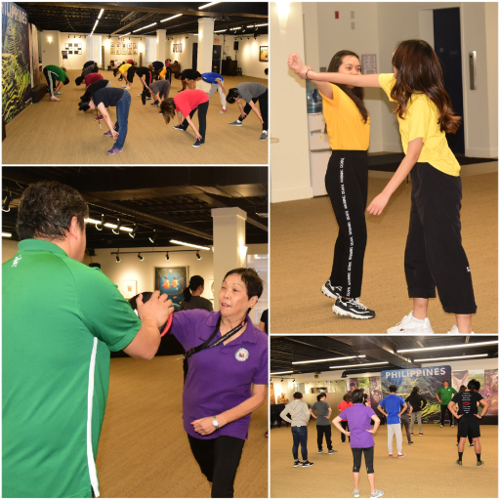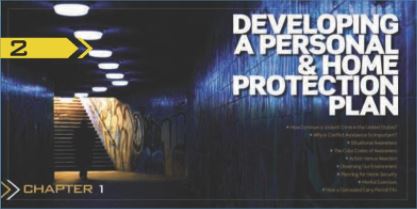
A personal safety device for children is a great way of ensuring your child's safety. These devices can be used to protect your child from bullying or other children at school, as well as keeping them safe on trips away from home.
It is vital to have personal safety devices for your children at all times, especially given recent violent incidents around the globe. These devices can help you defend yourself against potential attackers, and get support from your family.
Child Safety Alarm Device
A child safety detector is a small, handheld device which makes an ear-piercing noise when it is activated. These devices can be carried in a backpack, purse, keychain, and other places that are convenient for both you and your child.
These alarms are useful for alerting family and friends to potential attackers or getting their support. They can be useful if your child is travelling with you and you live in a danger area.

Child Safety Locks
A child safety lock helps keep your toddler from accessing medicine cabinets or drawers that sit low to the ground. These locks are easy for adults to install, but sturdy enough that determined youngsters can't dislodge them.
Safety Gates: These gates make it easier for adults to enter and exit rooms, such as bedrooms, and can help prevent young children from falling down stairs or into rooms with dangers inside them. These gates come with instructions and are usually very affordable.
Corner and edge bumpers: These bumpers are designed to protect your child's safety from any injuries that may occur if they slip on sharp or uneven surfaces, such fireplace hearths edges and furniture edges. These bumpers are great for protecting your child from injury when they fall on glass countertops, break doors or windows.
Cordless phones
A cordless phone can help you continuously monitor your child without having to leave the room. This is especially useful when your child is in a pool or any other area that could pose dangers.
GPS and RFID Trackers
A GPS tracking device is able to locate your child quickly, regardless of whether you are at work or on vacation. You can track the locations of your children using a smartphone app.

Child Locators
A child locator helps you find your child if they get lost. These locators are great for camping or other outdoor activities. If your child goes out of range, you can have the locator send an email or text message to alert you.
Car seat safety:
A car seat safety system can prevent your baby from being left behind in your car. SensorSafe infant car seats will, for example, chime when the seat isn't buckled. This will alert you that your baby is still in their car and that you have to take them to safety.
FAQ
Is it possible to give stun guns to children?
It all depends on how old the child is.
For those under 18:
18 years and older:
When giving a stun gun to a minor, you must ensure they understand the dangers of carrying one.
They should also only use it under adult supervision.
What should I look for in a self-defense class?
You should consider the reputation and experience of the instructor when choosing a self defense class. Ask about their education and credentials.
Ask for discounts or free trials. Some instructors offer exclusive offers to students who sign up for their courses.
Ask them if they offer online courses so that you can access them whenever you like.
Ask if the school offers emergency medical attention after class. This is especially important for anyone who gets hurt in class.
Look for a class that has a variety of exercises. This will allow you to practice each technique in a relaxed environment.
How much does a stun gun cost?
A stungun can be priced from $20 to $100 depending on the model.
Two batteries are standard on most models. The batteries can last for approximately three months.
Statistics
- Saying this, Self defense 101 would be the importance of situational awareness, which can never be replaced by the finest of martial arts, because it is this that would help you to avoid any likely attacks in the first place. (worldofselfdefense.com)
- The Rape, Abuse & Incest National Network reports that 70 percent of sexual violence cases aren't committed by random strangers in a dark alley but by people we know: friends, family, partners, co-workers, etc. (healthline.com)
- In a January 2018 survey of 1,000 women nationwide, 81 percent reported experiencing some form of sexual harassment, assault, or both in their lifetime. (healthline.com)
- Kung Fu alone has 400 unique martial art styles – and whilst you likely won't be able to find a school for each form, many other martial arts are completely different altogether. (budodragon.com)
External Links
How To
How to use Kubotans as self-defense
Kubotan is a small stick used to fight by Okinawan Martial Arts Masters. They were originally made out of bamboo, but are now made out of metal and plastic.
They usually measure around 5cm lengthwise and 2cm widthwise.
The Kubotan can be used to strike at the eyes, nose, or mouth of an opponent. It is also effective against other body parts such as elbows and knees.
Women often use Kubotan because they are easy to carry, lightweight, and can easily be concealed when not needed.
Knowing where to place your Kubotan to strike the correct spot is essential to be able to effectively use it.
You must also practice with the Kubotan before going out to accurately hit the right spots.
You will learn how to use your Kubotan in self defense.
-
Face the attacker
-
Hold the Kubotan tightly between your index and thumb.
-
Lift the Kubotan's arm above your head.
-
Swing the Kubotan downward towards the attacker's face.
-
The attacker should be struck on the nose and eye area.
-
As the Kubotan strikes the target, you should be able see its impact.
-
Continue to swing the Kubotan till you hear a "thwack".
-
Lower the Kubotan then take a step back.
-
You can continue fighting by repeating Steps 1-7.